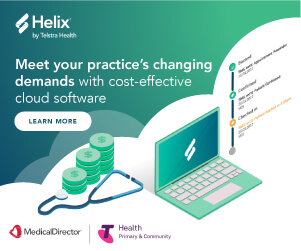Improving rural health with technology
Harnessing the potential of technology to enable ideal healthcare in Australia is especially important for those living in rural and remote areas where access to healthcare and face-to-face patient-clinician consultations are harder to come by.
While technologies such as cloud solutions facilitate information exchange in real time, teleconferences remove the impediment of distance. Dr Charlotte Middleton, GP and Chief Medical Advisor at MedicalDirector, explores how technology continues to improve telehealth in Australia.
The status of rural health in Australia
Rural health in Australia has received considerable airtime in recent years. In 2017, a new telehealth initiative was announced as part of the federal budget, aimed at addressing the higher suicide rates in rural Australia and the city–country divide in the provision of health services. Likewise, we also saw the appointment of a national rural health commissioner, tasked with filling the gap of medical experts by improving rural health policies.
Technological innovations are popping up every day to complement the work already being done to develop telehealth in Australia. For instance, St John Ambulance’s First Responder app alerts qualified first aiders to nearby emergencies so they can provide preliminary care while an ambulance is en route.
As a country with a healthcare system that is regularly ranked among the best in the world, ensuring we’re all given equal access to healthcare should remain a non-negotiable. But despite such advances, access to doctors and specialists remains the single biggest health concern of country Australians.
How cloud technology can help
Cloud-based solutions can provide the connectivity and interoperability needed to effectively manage healthcare in more remote areas, where providers can be few and far between and the costs of establishing and managing locally hosted servers prohibitively high.
A number of practices we’ve been speaking to recently administer care off-site and needed a database they could access and utilise regardless of where they were. Helix, our cloud-based clinical software solution, doesn’t rely on a locally hosted server – it offers flexibility and streamlined administration processes so more time can be spent on delivering care.
The movement of data enabled by cloud-based solutions also fosters an environment of shared responsibility between providers and patients – with 70 percent of patients claiming they have become more engaged with their healthcare through greater access to online patient portals and telemedicine. Healthcare ‘in the cloud’ allows for the fast and secure movement of information in real time – delivering vital information and insights to where they’re needed, regardless of distance.
Where telehealth can help
The telehealth initiative referred to earlier, which came into effect in November 2017, meant people living in rural and regional Australia will be able to claim a Medicare rebate for online video-conferencing consultations with psychologists.
A recent survey conducted by the Royal Flying Doctor Service found that while two-thirds of respondents said they needed to travel one hour or less to see a medical professional, a visit to the doctor for those living in more remote areas meant a 10-hour or more round trip – a clear indication that there is an insufficient number of healthcare professionals working in the areas they’re needed most.
Telehealth technologies such as video consultations can help ease workforce challenges as distance no longer impedes the delivery of care – freeing up time, money and resources.
Telehealth for the future
Moving forward, the uptake of cloud technologies will continue to enhance the capabilities of telemedicine, with some predicting that virtual care will become commonplace in 2018, when an estimated 80 percent of patient service interactions will make use of IoT and big data. The need for highly scalable, flexible communications infrastructure to manage these applications will only further enhance industry adoption of cloud technologies and telehealth solutions in the years to come.









